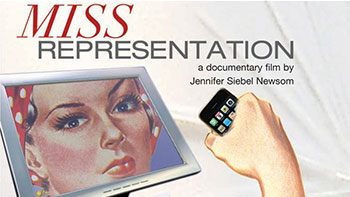Men are not immune to hair trends. From man buns to mustaches, men have been rejecting American societal norms around clean-shaven faces and high and tight haircuts for years. As self-expression picks up steam in men’s grooming habits, brands are vying for the loyalty and dollars of their increasingly discerning consumers. Gone are the ad campaigns which sold heterosexual men on the idea that the right shaving cream or deodorant would attract attention from women. A new dawn of marketing masculinity itself has emerged, one that is empowering men to reject narrow definitions of masculinity.
The market for men’s grooming products is growing around the world. Valued at $58 billion globally in 2017, men still spend just a small fraction of what women do on grooming and personal care. But signs are pointing to change—the men’s grooming industry is forecasting 5% growth over the next four years. Major players like Gillette have found their market share under siege from low-cost disruptors like Harry’s, as well as from electrical razors. Even as the stakes are raised, men’s grooming brands are employing enlightened and inclusive marketing strategies to sway consumers their way.
Here’s a roundup of five ads marketing modern masculinity:
Harry’s (1 of 2): The brand won the prestigious Glass Lion for Change award at the 2018 Cannes Lion Festival of Creativity for its “A Man Like You” short film. This award celebrates ideas that change the world, demonstrated through work that addresses gender inequality, imbalance, or injustice. The company says “Harry’s is committed to amplifying the ongoing cultural conversation around what it means to be a man. We believe that a man can be strong and nurturing, self-assured and accepting of others. Because the truth is, a good man is simply a good human.”
Gillette: Earlier this year, Gillette released a controversial ad that revisited its old catchphrase, “the best a man can get.” It flipped the question on its head, asking men to be introspective about what they can and should be doing about bullying, sexual harassment, mansplaining, and other aspects of toxic masculinity. The backlash from the right was swift and sustained, but Gillette stands by the campaign and says the daring ad has not negatively impacted sales.
Axe, (1 of 2): Citing the statistic that “72% of guys have been told how a real man behaves,” Axe highlighted the volume of internet searches men conduct which pose the question: “Is it OK for guys to…” be emotional, wear makeup, not like sports. Axe has moved beyond its early sexist campaign that revolved around heterosexual men objectifying women. According to the company, “society is changing and we’re starting to see a shift in the definition of masculinity, it’s beginning to be talked about more in the media but there’s still a long way to go. Now is the time to use the power of the Axe brand to raise awareness of the dangers of toxic masculinity, and do something about it.”
Harry’s (2 of 2): Recognizing that trends may be pointing to fewer men shaving their facial hair, the brand recently released an ad titled “Shave or Don’t” which supports choice and acknowledges that men go through facial hair phases. The brand wants to be there for those hair-free phases. What’s most remarkable about this new ad is that Harry’s is believed to be the first major brand to feature a trans man shaving with the voiceover “you can shave to feel…like you.”
Axe (2 of 2): Axe released a new series of Web videos under a campaign umbrella called “Bathsculinity.” The videos feature actor and comedian Lil’ Rel Howery in a bubble bath proclaiming that “there’s no one way to be a man.” The creators of the ad said: “The purpose of the ‘bathsculinity’ campaign is to start a new conversation around masculinity in the 21st century about what it really means to be a man. Finally, stereotypes are being recognized for what they are and men are being encouraged to express themselves more freely and to look after themselves.”
Women make most of the purchasing decisions for men’s products— whether they’re buying them for their family members or to avoid the “pink tax”— so it’s no surprise that brands are strategically promoting an evolved narrative around masculinity in the #MeToo era. But if the secondary benefit is that the media is beginning to sell a more accurate version of what it means to be a man, then we’re here for it.
Take Action! Make a point of choosing men’s care brands that use their platforms to promote healthy masculinity.



